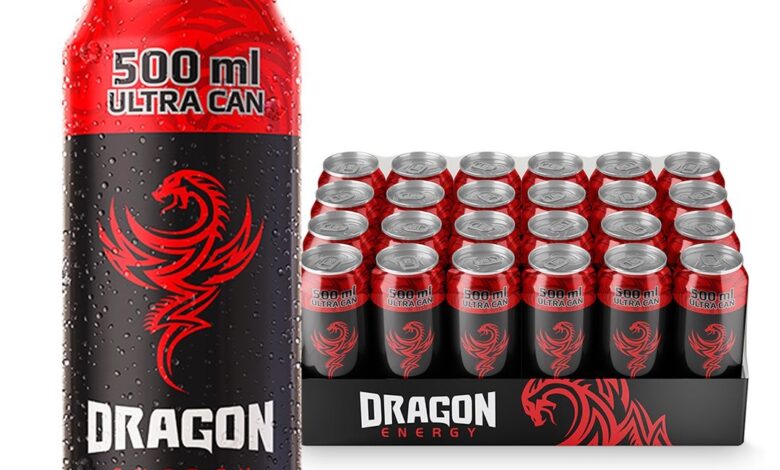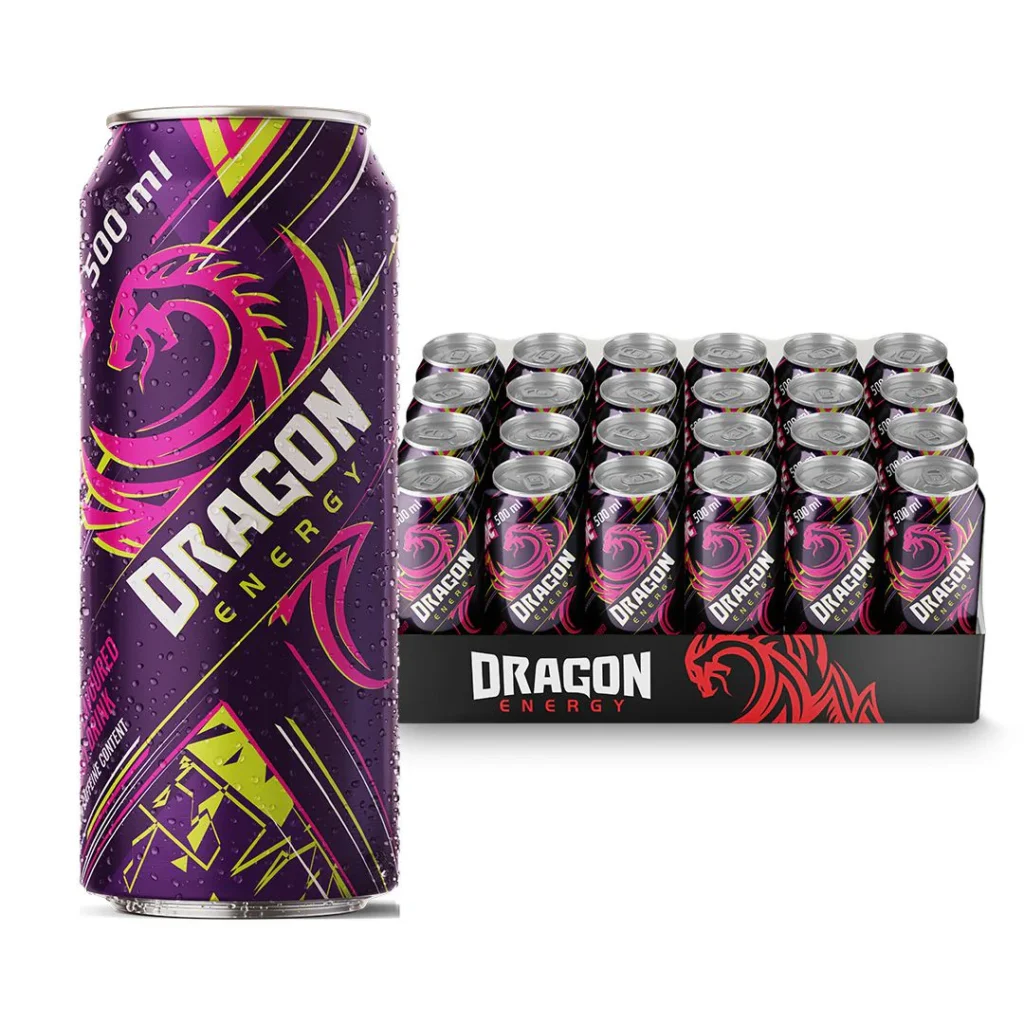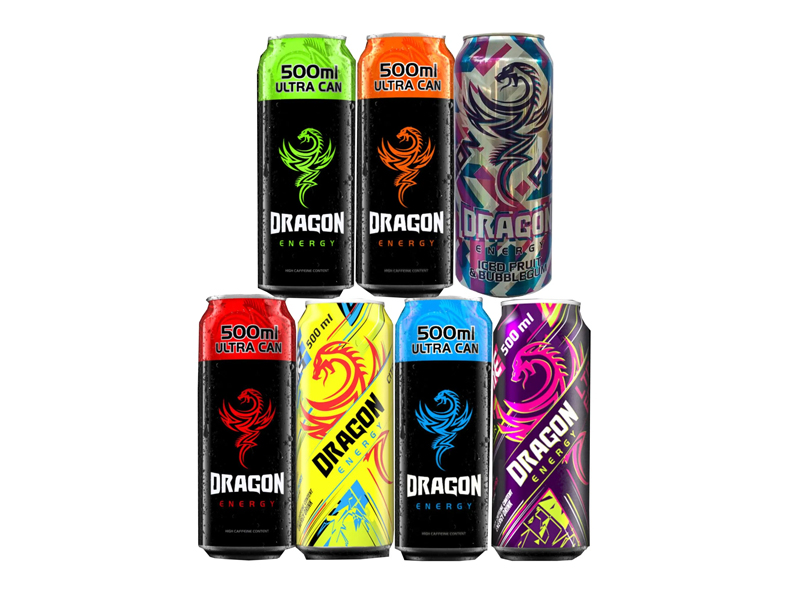How Dragon Energy Became South Africa’s Fastest-Growing Energy Drink

How Dragon Energy Became South Africa’s Fastest-Growing Energy Drink. When Dragon Energy entered the South African market, it did so quietly—but with sharp intent. At the time, the energy drink category was already stacked with dominant global brands like Red Bull and Monster, which had deep pockets, international recognition, and premium price tags. Dragon Energy chose a different route. Rather than competing on status or lifestyle branding, it bet on two things: value for money and widespread accessibility.
Over the next decade, Dragon Energy became one of South Africa’s leading energy drinks. It didn’t rely on global celebrity endorsements or aspirational advertising. Instead, it built its reputation through consistency, understanding local markets, and staying fiercely focused on its core consumer. Here’s how Dragon Energy built its success, one can at a time.

Entering the Market with a Clear Value Proposition
Dragon Energy launched at a time when the average South African consumer was becoming more price-sensitive. Instead of trying to emulate the exclusivity of its global rivals, Dragon positioned itself as an affordable, no-nonsense energy drink that delivered the same punch of caffeine and taste without the inflated cost.
Its pricing strategy was clear: provide a high-quality energy drink at a significantly lower price point. This resonated with a broad range of consumers—from blue-collar workers and students to taxi drivers and truckers. The brand’s mission was direct and simple: energy for everyone.
Strategic Manufacturing and Distribution
Dragon’s key early advantage was its local manufacturing. The brand is produced by Kingsley Beverages, an international company with regional offices in Dubai (UAE), Johannesburg (South Africa), Peterborough (UK), and Houston (USA). By keeping production local, Dragon was able to control costs, respond quickly to demand, and ensure quality consistency.
From early on, Dragon focused on aggressive distribution. Its goal wasn’t to be seen in exclusive bars or trendy cafes—it was to be available in every corner store, petrol station, and spaza shop across the country. Accessibility was central to its growth.
This boots-on-the-ground distribution strategy helped Dragon gain visibility in both urban and rural markets—wherever consumers needed a reliable energy boost, Dragon aimed to be there.

Bold Packaging and Street-Level Marketing
While Dragon Energy didn’t have the budget for flashy international campaigns, it made smart use of eye-catching packaging. The bold dragon logo and bright colours made the product stand out on shelves. The brand leaned into local engagement, sponsoring events, motorbike stunts, and community races.
Dragon’s marketing approach was hyperlocal. It understood that its target market was not necessarily on billboards or prime-time television—they were in the communities. So the brand embedded itself in townships, taxi ranks, and campuses, offering tastings and giveaways that created genuine word-of-mouth buzz.
Overcoming the Premium Perception Barrier
One of Dragon’s early challenges was fighting the perception that lower price meant lower quality. To counter this, the brand focused on taste and performance. Customer satisfaction was reinforced through consistent product quality, and once consumers experienced that the drink delivered the same effect as more expensive alternatives, loyalty grew.
Additionally, Dragon expanded its product range to include different flavours and sugar-free variants, keeping the brand fresh while still affordable. This product innovation helped Dragon compete not just on price but also on variety and taste.

Scaling While Staying Grounded
By the late 2010s, Dragon Energy was no longer a challenger—it was a contender. Sales were climbing, and brand awareness had solidified. Yet, it didn’t lose focus. The brand avoided overextending itself with unnecessary lifestyle campaigns or international expansions that could dilute its core appeal.
Dragon Energy remained grounded in what made it successful: local production, competitive pricing, wide distribution, and relevance to its core market.
Lessons for Aspiring Entrepreneurs
Dragon Energy’s story holds key lessons for anyone building a brand from the ground up:
- Clarity wins: Dragon’s value proposition was unambiguous—affordable energy that works. Knowing exactly what you offer helps cut through noise.
- Local is powerful: Manufacturing and marketing locally helped Dragon control costs and connect authentically with its audience.
- Start where your customers are: Dragon didn’t chase status. It focused on where its customers lived, worked, and shopped.
- Invest in taste and consistency: Even with budget positioning, product quality can’t be compromised. Consumers notice.
- Grow strategically: Don’t expand for the sake of scale. Stick to what works, then build outward thoughtfully.

A South African Success Story
Dragon Energy didn’t need glossy billboards or international athletes to become a household name. It built its reputation through smart strategy, local insight, and a commitment to value. In doing so, it became a symbol of how brands can thrive by staying true to their roots while meeting real-world needs.
For entrepreneurs, Dragon’s journey proves that you don’t need to be first, flashiest, or most famous—you just need to be focused, authentic, and relentlessly relevant.


